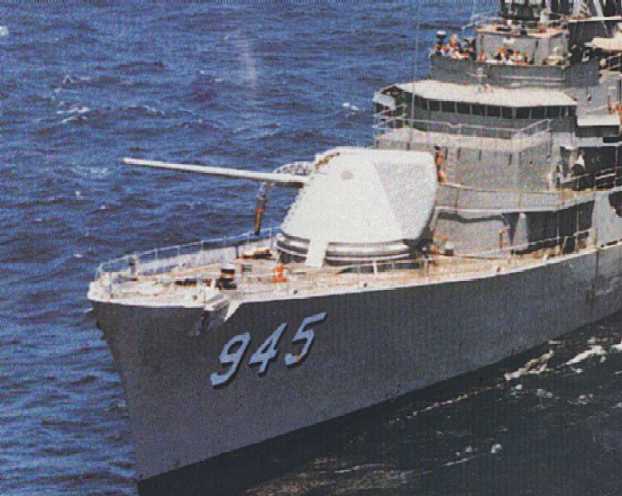|
The Major Caliber Light Weight Gun (MCLWG) program was an ambitious attempt at solving these problems. The goal of this program was to produce a larger-caliber gun capable of supporting amphibious landings yet still light enough to fit even on destroyer-size ships. The weapon was originally intended to be an adaptation of the Army's 175 mm (6.9") artillery gun, but the 8" (20.3 cm) caliber was selected during the initial evaluation testing in the early 1970's. The projectiles planned for the new weapon were to combine a large explosive charge together with long range and high accuracy through laser guidance and thus were to be able to attack even small targets such as individual bunkers. To make this weapon widely available throughout the fleet, plans were made to mount it on many of the proposed DX, DXG and CSGN designs of the 1970s, but the only ships actually designed and built to use it were the Spruance (DD-963) class destroyers (see Mount / Turret Notes below for details). Although the prototype was successful, the program was cancelled in 1978 as a result of budget considerations during the defense cutbacks of the late 1970s. The chamber of this weapon was designed to be able to handle a 10-11 caliber projectile. One of the proposed munitions was an extended range guided round that would have been around 90 inches (229 cm) long. As the USN test ship for this weapon from 1975 to 1979, the USS Hull (DD-945) was the only destroyer ever to mount an 8" (20.3 cm) cannon. The mount was removed from the USS Hull in 1979 and is now at the Naval Surface Warfare Center in Dahlgren, Virginia. The gun barrel for the Mark 71 was the Mark 28 Mod 1, a 55 caliber two-piece loose liner barrel. The production gun mount was to have used a one piece monobloc barrel designated the Mark 32. |

8"/55 (20.3 cm) Mark 71 on USS Hull DD-945
|
| .
|